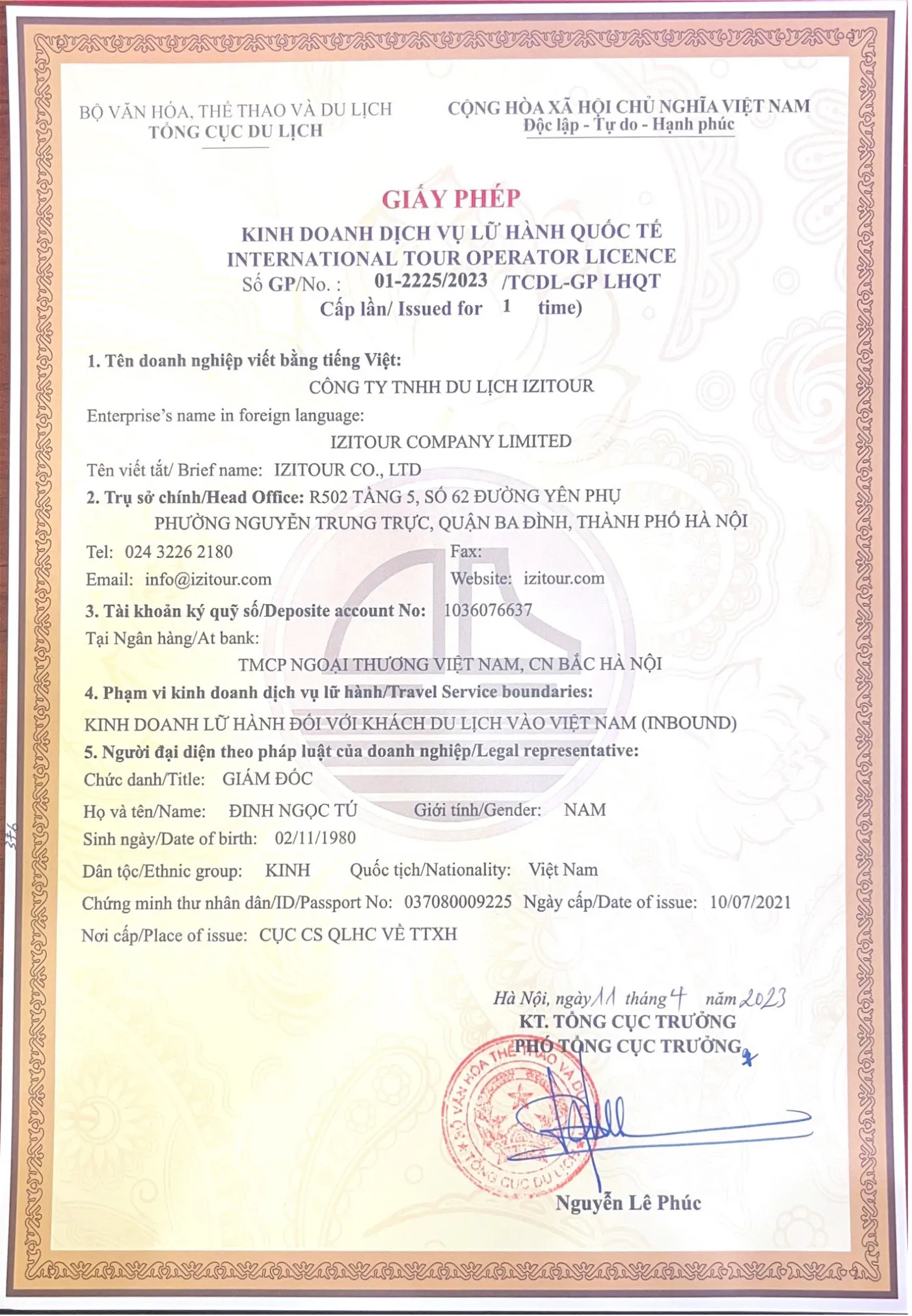Sapa is a stunning destination, not only for its breathtaking scenery but also for its the splendour cultural diversity of the local community. Sapa is home to five distinct ethnic minority groups: the Hmong, Red Dao, Tay, Giay, and Xa Pho. Join us in discovering their vibrant traditions firsthand, from their distinctive clothing and customs to their lively festivals.
1. Sapa ethnic minorities’ traditional costume
Hmong people’s clothing
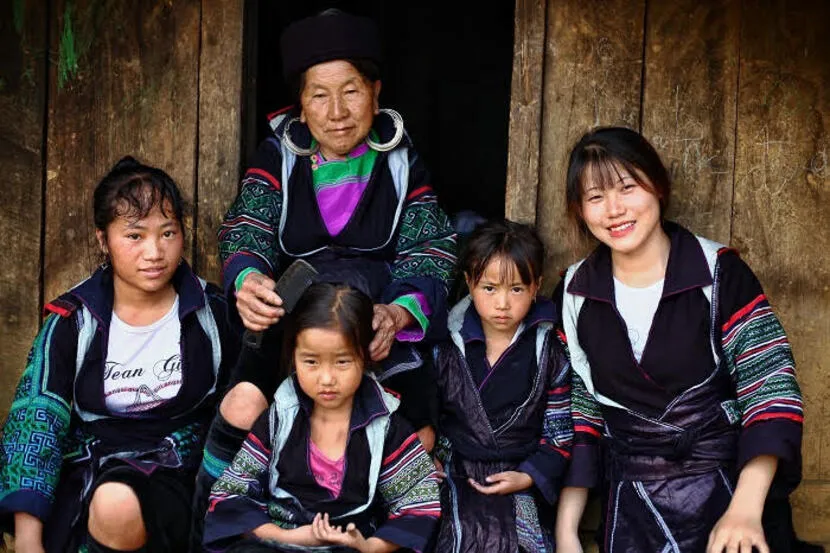
Three generations of a Black Hmong family in traditional clothing
The Hmong people account for a significant portion of the ethnic minority population in Sa Pa. Their traditional clothing stands out distinctly from other groups. Men typically wear black or blue-black trousers, short-sleeved shirts, and embroidered black hats. On the other hand, women's wear boasts intricate and elaborate designs. The embroidery patterns often feature geometric shapes like spirals, rhombuses, squares, and rectangles. The colour palette is quite varied, with combinations of blue, black, yellow, and red being prevalent. It is noteworthy that Hmong women wear knee-length pants instead of skirts as part of their traditional ensemble.
Red Dao people’s clothing
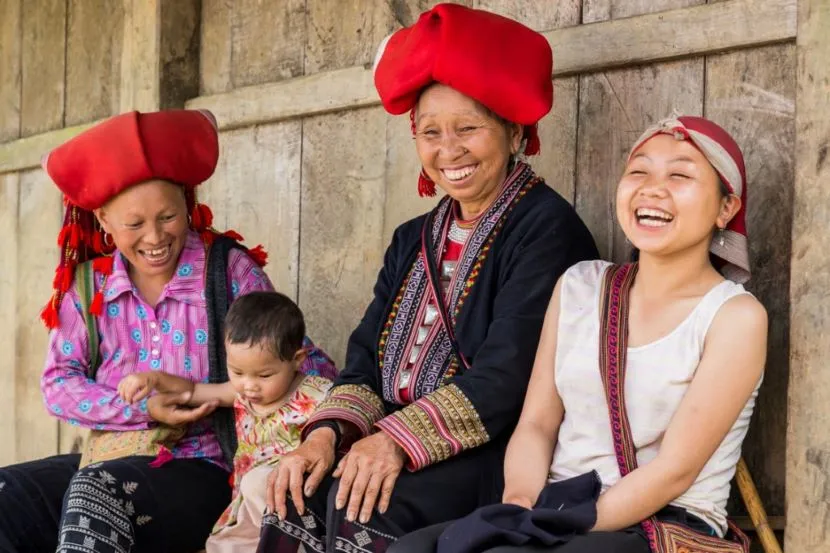
Travelers visit a Red Dao family
Besides Hmong people, the Red Dao people also account for a large number. You can quickly identify them by their outfits, which are highlighted by the red colour. Their traditional clothing consists of a scarf, hat, shirt, pants, belt, and leggings. The clothing's sleeves, neck, and back are carefully embroidered with red, yellow, and white threads. These embroidered patterns include pine trees, tiger paws, serrated teeth, and more. All these elements are skillfully combined to create a beautiful and harmonious overall appearance.
Tay people’s clothing
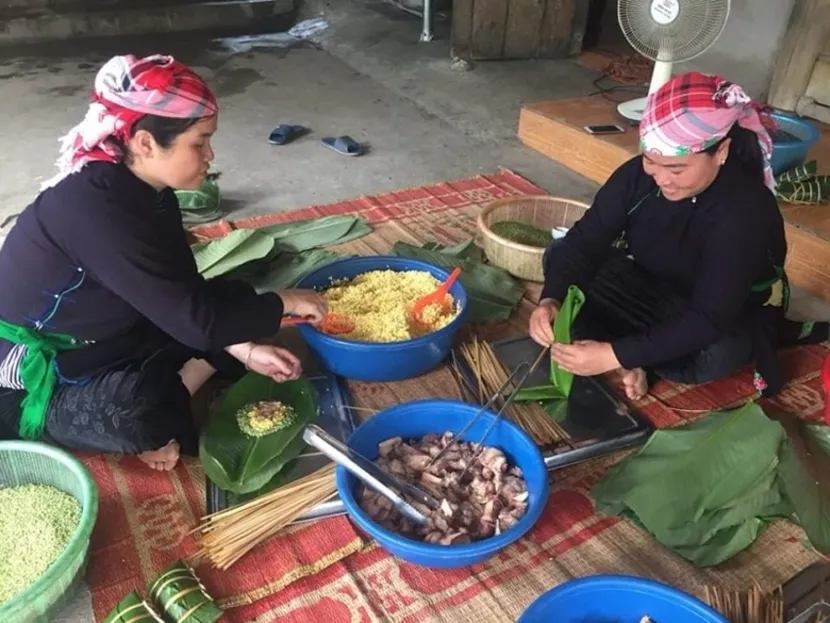
Tay people wear their traditional clothing in daily life
When it comes to clothing, the Tay people in Sapa have a simpler style than other Sapa ethnic groups. Both men and women wear dark blue shirts with a round collar, two pockets on the front sleeves, and wide cloth belts.
Giay people’s clothing
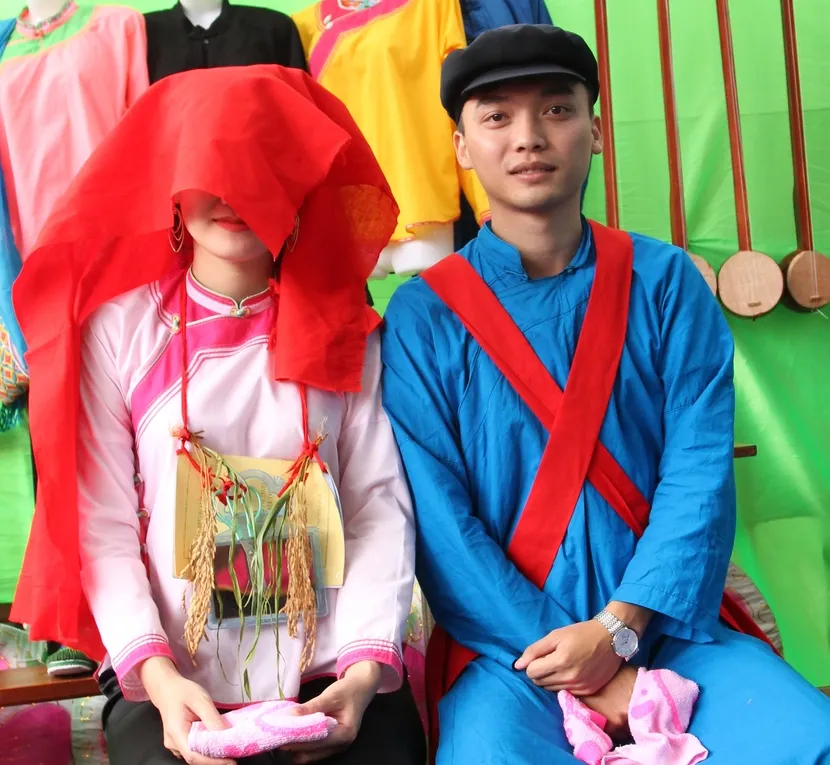
Bride and groom in traditional clothing of Giay people
Giay is also one of the Sapa ethnic groups that wear simple clothes. Their clothes are less embroidered, only decorated with colourful fabric around the collars and bodices.
Xa Pho people’s clothing
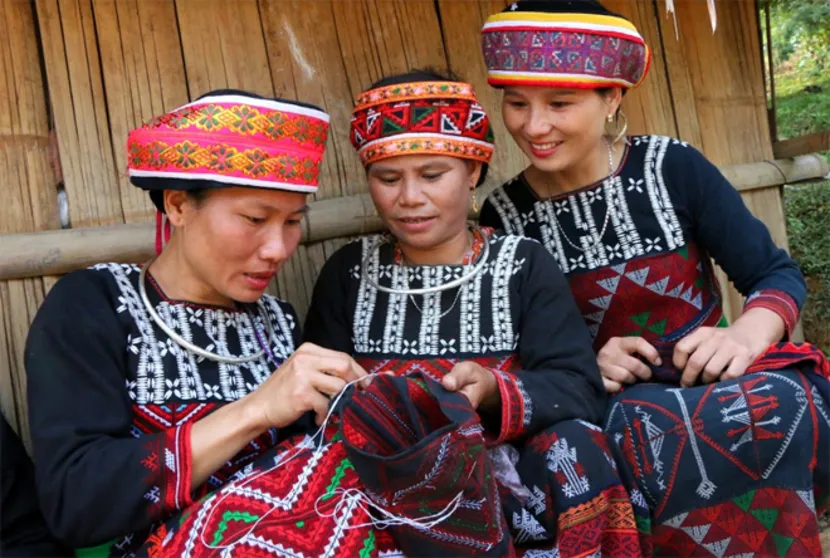
Xa Pho women gather to make traditional clothing
The Xa Pho ethnic group's clothing is not only durable but also beautiful. They make shirts and skirts from cotton, adding various details and colours. The designs are simple yet filled with symbols expressing their cultural values, like hills, pine trees, and waterways.
2. Traditional handicrafts of ethnic groups in Sapa
In Sapa, the indigenous people have preserved and passed down traditional crafts from one generation to another. Here are some fascinating traditional handicrafts practised by the local community.
Brocade weaving
Brocade weaving is an art form practised by several ethnic groups in Sapa, such as the Dao, Hmong, and Tay. Even today, brocade weaving not only fulfills the needs of the local people but also serves as a unique gift to bring home. Many qualified products are exported to foreign countries. To learn about the process of brocade weaving, you can visit villages like Lao Chai, Ta Van, Cat Cat, and Ta Phin. Creating a delicate brocade product involves various meticulous steps, including preparing the thread, weaving, embroidering, and dyeing with indigo, etc…
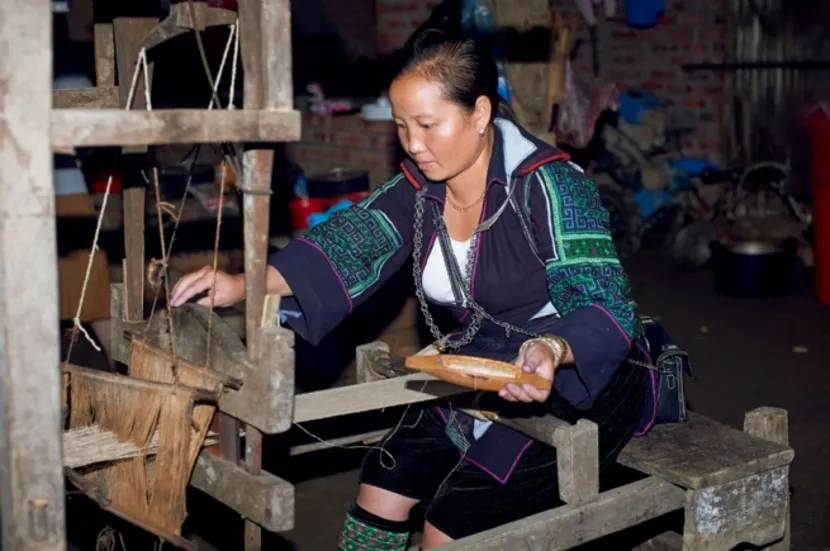
Practising brocade weaving indoor
Silver carving
Some Sapa ethnic minority groups also specialise in silver carving. This craft requires creativity, precision, and knowledge passed down through generations. Creating silver sculptures involves various steps, including preparing tools like furnaces, moulds, hammers, and iron tongs, as well as carrying out processes like heating and shaping the silver. As a result, products come in a wide range of designs, such as bracelets, necklaces, rings, brooches, and more. Each piece of jewellery showcases unique shapes and decorative patterns.
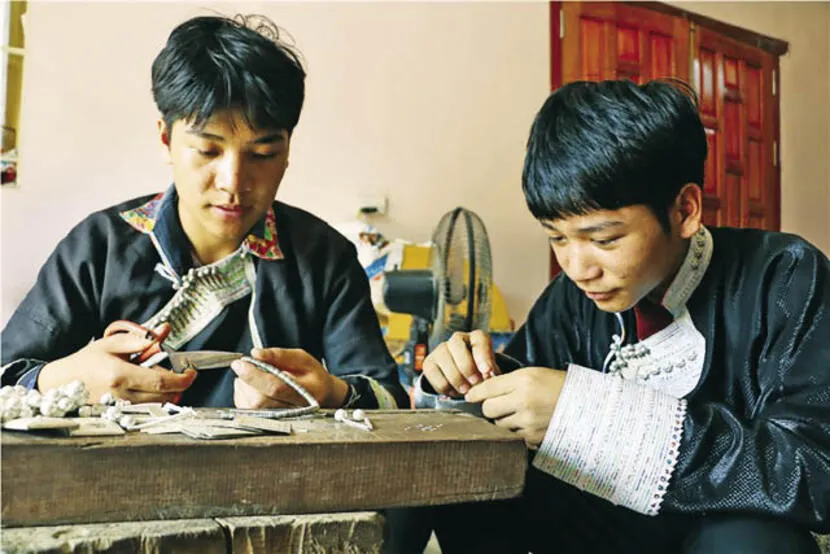
Silver carving is mainly done by man
Brocade embroidery
Alongside brocade weaving and silver carving, brocade embroidery holds a special place, particularly among the Red Dao and Xa Pho communities. It is an essential skill for ethnic women, allowing them to support their families and themselves. Young girls from these ethnic groups start learning embroidery in primary and secondary school when they acquire techniques, select silk threads and fabrics, and learn to blend colours.
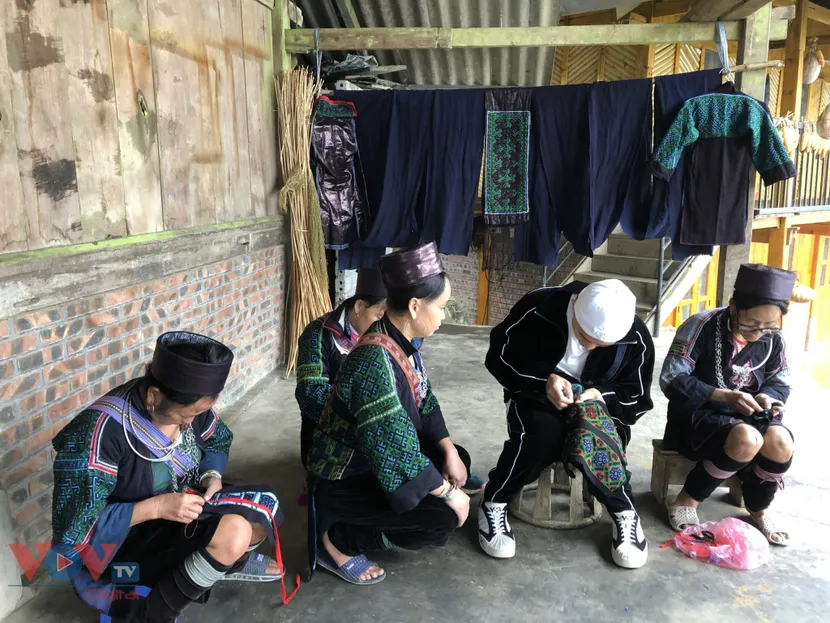
These tiny women meticulously hand-embroidered cloth pieces
Indigo dyeing and batik drawing
When wandering around Sapa, you'll often see people dressed in dark blue clothes, which are made using a special dye called indigo. The skill of indigo dyeing has been handed down through many generations and holds great importance for the Tay and Hmong ethnic groups. Alongside indigo, another popular technique is batik, where patterns are drawn on fabric using beeswax before it's boiled. As the wax melts away, beautiful and detailed designs emerge, making the batik patterns durable and long-lasting.
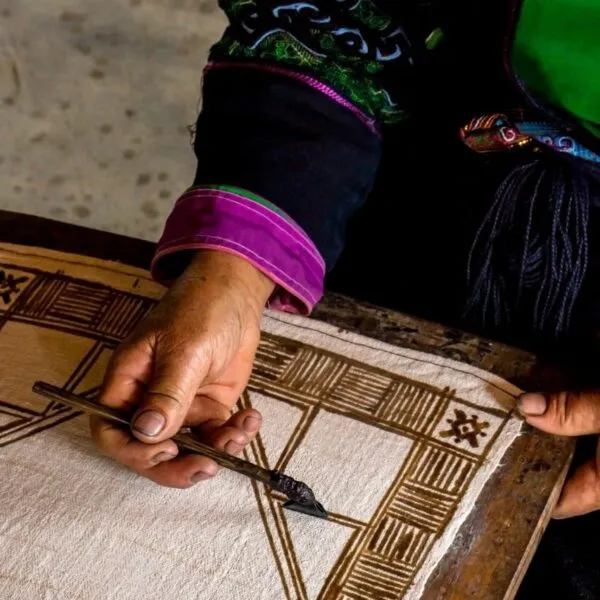
Batik drawing using beewax
Rattan and bamboo crafts
The H'mong and Tay people in Sapa make useful things for their daily lives using materials like bamboo and rattan. By skillful hands, craftsmen create strong and attractive products such as baskets, bags, trays, paper boxes, jewellery boxes, flower pots, and more.
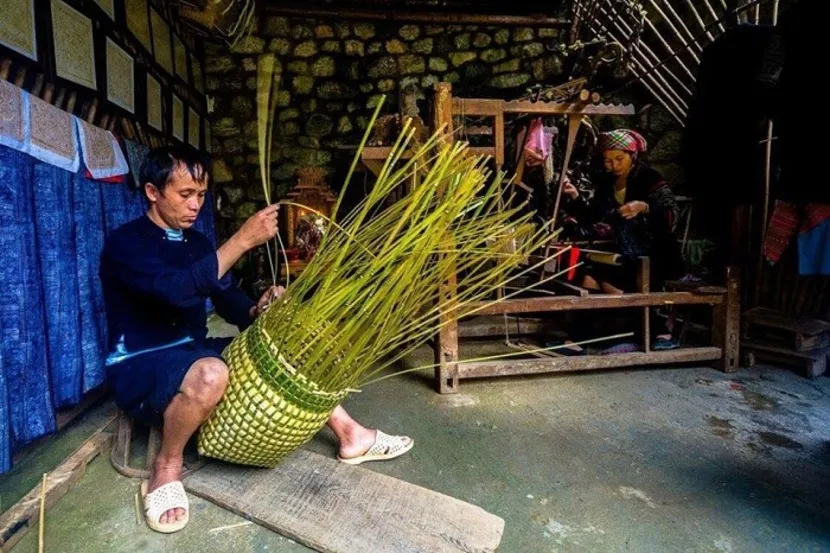
Bamboo craft for daily use
3. Colourful cultural festivals of Sapa ethnic groups
If you visit Sapa during the festival season, you can learn a lot about the ethnic minority groups in Sapa. Here are a few traditional festivals you should know about, and don’t miss them if you have a chance to join in.
Gau Tao festival of the Hmong people
Gau Tao is the most well-known festival of the Hmong people. It takes place on the first day of the New Year and is a special time when they pray for good health, success, and abundant harvests in the coming year. It's also a chance for the Hmong to come together with their families after being away for work. During the Gau Tao festival, you can enjoy watching exciting traditional games like horse fighting, crossbow shooting, flute dancing, and cock fighting.
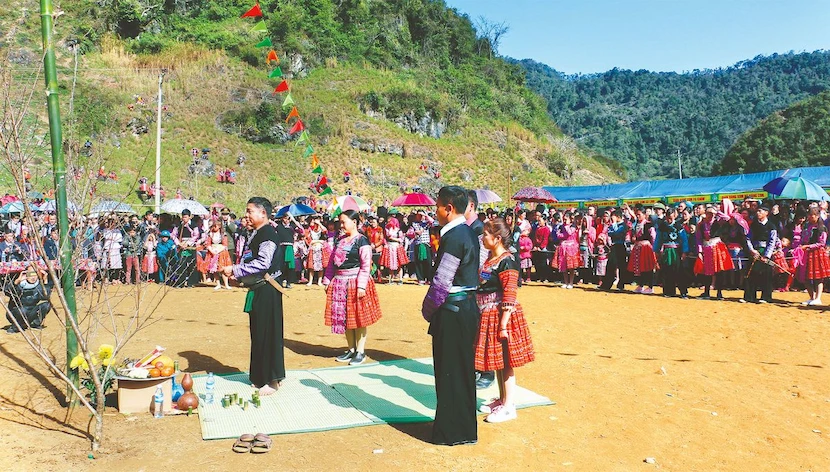
Gau Tao Festival usually lasts for three days
Dance Festival - the New Year's Eve of the Red Dao
The Red Dao New Year Dance Festival takes place during the first and second days of the Lunar New Year. Before the festival, boys in the village gather to practise dancing, while girls work on making new shirts. They prepare the most beautiful outfits for this special event, which is the most important festival of the year for them. Once all the preparations are done, the Red Dao people come together to sing, dance, drink, and chat in a lively, warm, and close-knit atmosphere.
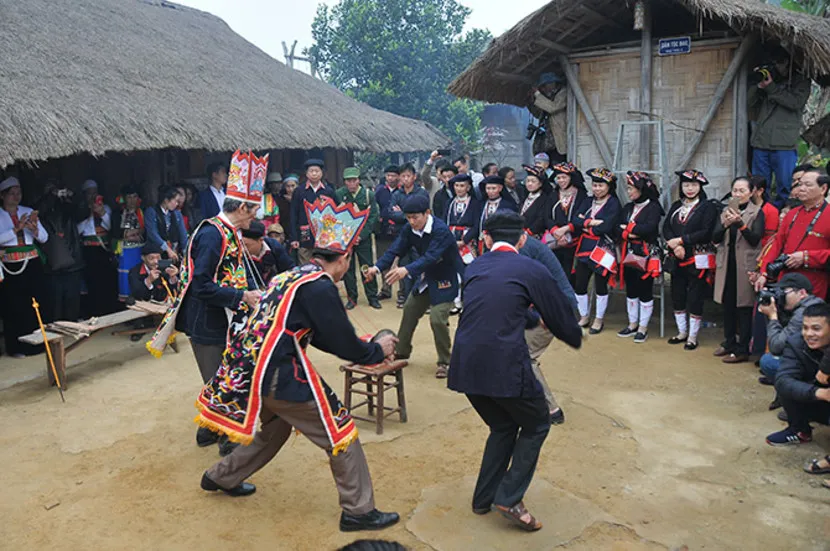
Beside Gau Tao, Dance festival is one of the most important festivals in Sapa
Sweeping ritual of the Xa Pho people
In the second month of the lunar calendar, Xa Pho people have a special ceremony to keep away bad luck and wish for a peaceful new year, bountiful harvests, and good fortune. Afterward, the Xa Pho ethnic group hosts various games and joyful celebrations that continue until midnight. Because of its distinctive nature, this festival is truly one of the most remarkable events in Sapa that you should attend.
New Rice Offering Festival
Each year, from August to September, according to the lunar calendar, the ethnic minorities in Sapa come together to celebrate the New Rice Offering Festival. This tradition not only holds immense cultural significance in terms of beliefs and spirituality, but it also highlights the importance of rice, which is a crucial agricultural crop for the ethnic groups in Lao Cai province.
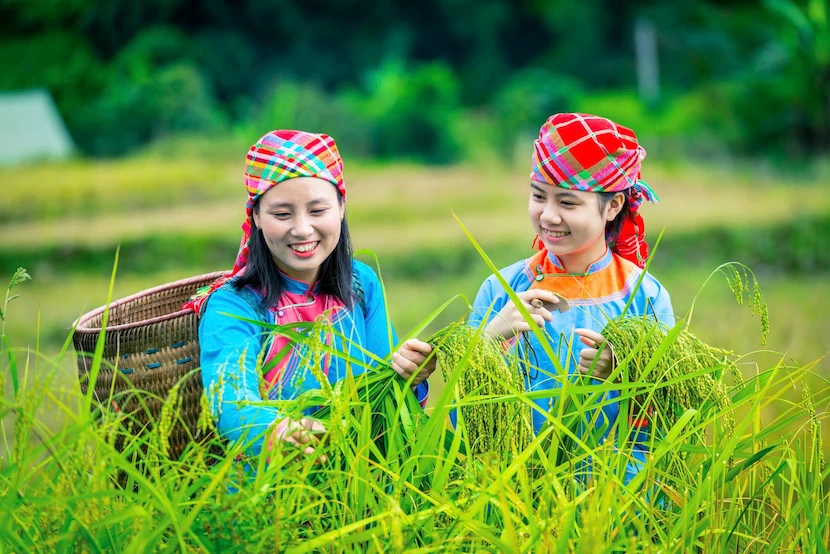
New Rice Offering Festival has a long history
To organise this festival, families and village communities collectively choose a beautiful day at the beginning of the harvest season to ensure fruitful outcomes. They gather to offer prayers and worship to their gods and ancestors, seeking blessings for favourable weather, prosperous businesses, abundant crops, and the well-being of future generations
The ethnic groups of Sapa are the heart and soul of this breathtaking region. Their unique cultures, woven into the fabric of the landscape, offer visitors a journey into a way of life that has thrived for centuries. In the vibrant threads of their clothing, the echoes of ancient songs, and the warmth of their smiles, we find a connection to something truly special. Come, walk alongside the people of Sapa, and discover the enduring spirit of this remarkable place.
See more:
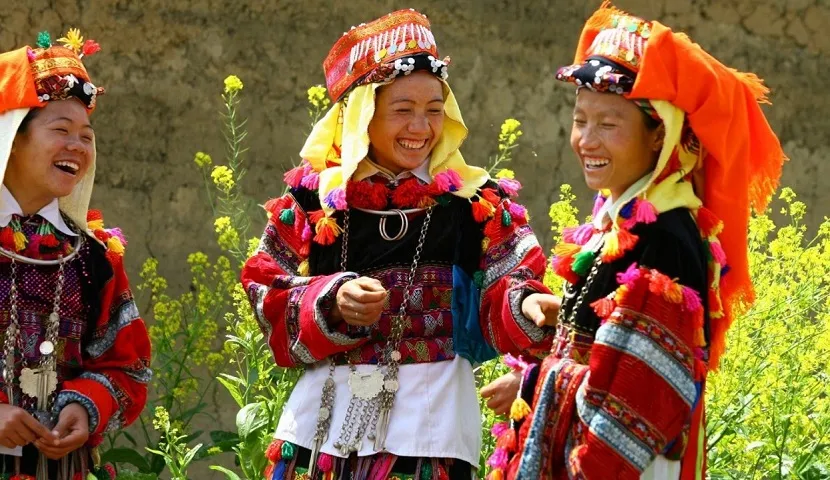








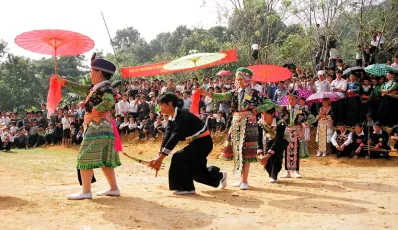
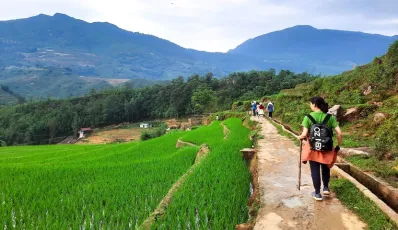

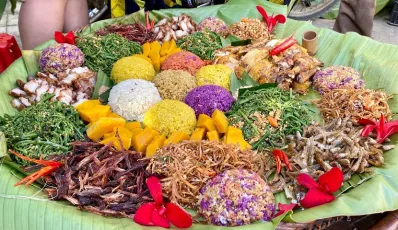
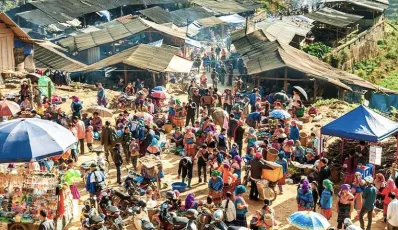
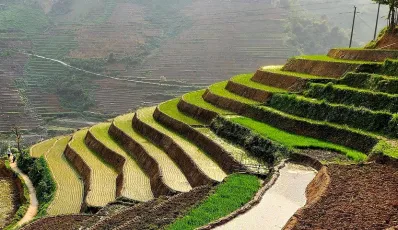
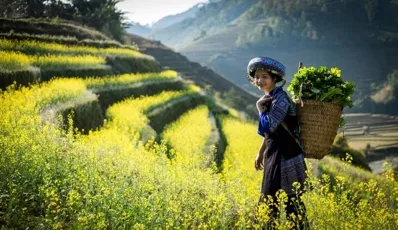
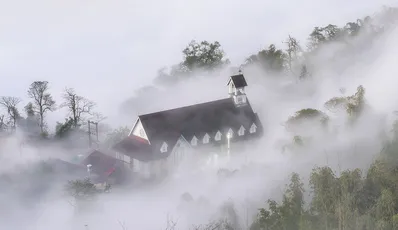

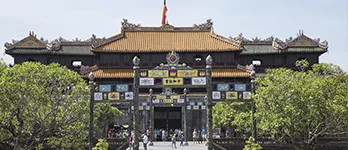


 TRAVELERS' CHOICE 2025
TRAVELERS' CHOICE 2025 